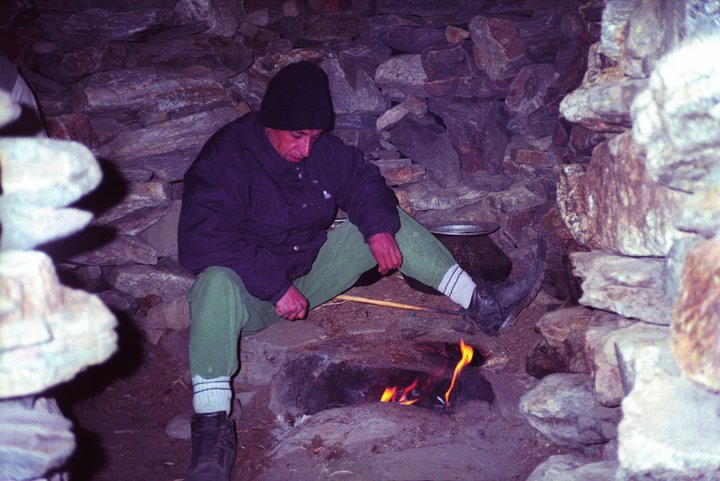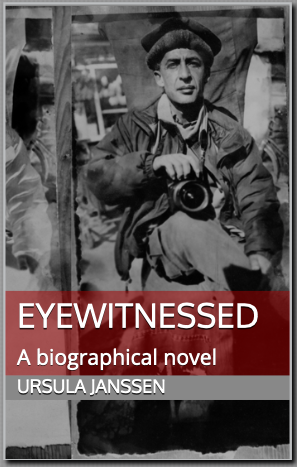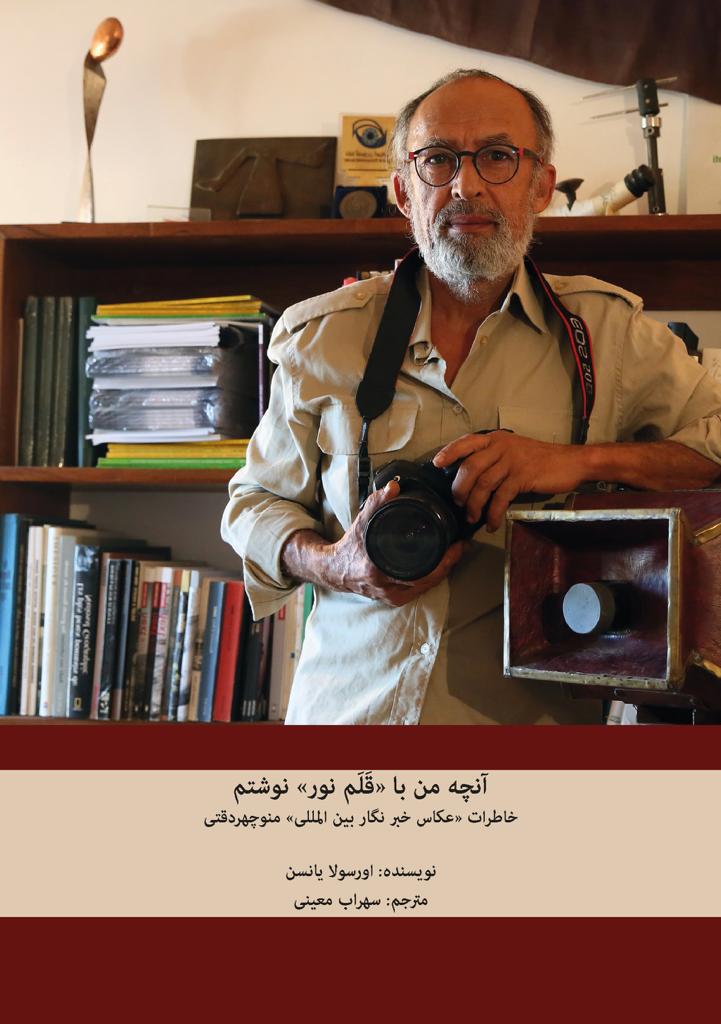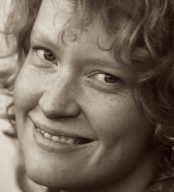Michael Jackson and Napoleon
It was a rare sunny spring day in Paris. Manoocher was still staying at the military hospital of Les Invalides in Paris, months after having been shot by an Israeli sniper in Ramallah. Together with a few other war invalids, all in wheelchairs, he came out to sit in the sun in front of the Dôme des Invalides where Napoleon Bonaparte is buried. For them it was tourist watching, an opportunity to get out, a diversion. As usual, Manoocher had his camera on him. Sitting and chatting, from far he could see a strange scene: a guy all dressed in red and carrying a surgical mask (not a usual sight at the time) holding two masked children by their hands. Whatever, Manoocher took his camera, pointed it at the man and managed to shoot one frame, not a clear shot, from far, before several men in dark suits jump on him, held him back and preventedhim from taking further photos. His companions, all war veterans, one of them a former French secret service guy wounded in action, all in a wheelchairs, came to assist him and started pushing the men away. But those bodyguards, because that is what the guys in suits apparently were, didn’t give a damn about disabled or not and restrained them. Meanwhile Manoocher finally realized what was going on and that the masked guy was Michael Jackson with his children visiting Napoleon’s tomb. His bodyguards held the invalids tight and kept Manoocher’s camera until the singer had passed. Then they left. Only afterwards the veterans realized they had missed an opportunity to create a ruckus and sue Michael Jackson for his bodyguards attacking hospitalized invalid veterans in wheelchairs …

The milkman
After the Islamic Revolution in Iran, the Ministry of Information had changed its name to Ministry of Islamic Guidance.They were responsible to issue press cards to journalists. Among that ministry there was an office called Foreign Media Department which would issue press cards to journalists working for international press agencies. At the very beginning it wasn’t an issue, they would give journalists permits without causing problems. But slowly, while the hardliners took power, things got tricky. Heads of departments changed and were replaced with hardliners. A guy called Ismaelzadeh, who was from Azerbaijan, like Manoocher, but hardly spoke any Farsi, became the responsible for international press correspondents. Ismaelzadeh kept a pistol on his desk whenever Manoocher went to see him to renew his press card. Ismaelzadeh would point at his pistol, saying “This is how we treat our enemies”.
One day he called Manoocher into his office. Gun on the table, he said unabashedly: “Look, you are earning dollars, and I need money to restore my house. You have to give me money.”
“No”, Manoocher replied, “you have your salary and I have mine, why should I give you mine?”
Ismaelzadeh grabs his press card: “That’s it. You are not allowed to work anymore.”
“Seriously? You cannot do this!”
To which Ismaelzadeh exclaimed: “I am not taking your card because of this. You don’t remember me? I am from Tabriz. Do you remember the boy who used to bring milk to your neighborhood every morning. I brought milk to your family’s house, too.”
“No, I don’t remember, I was still small when we lived in Tabriz. But you surely were payed for your work, no?”
“I came every morning, even on cold days, and I hated it. Now I am in power and it is time for revenge.”
(This kind of revenge on the Iranian people by the Mullah regime is continuing to this day.)

The Arafat double
In 1994, after his return to Palestine, Yasir Arafat was holding a speech in a mosque in Gaza. Manoocher went there with some other photographers and took photos of Arafat while speaking. Arafat finished his speech, left the mosque, got into his car and left, all documented by the press. With the event finished, Manoocher returned to his own car which he had parked behind that mosque. Suddenly he saw an armored car arriving and parking at the back door, and again Arafat comes out and goes to the car! It must have been a double. But which one was the real Arafat?
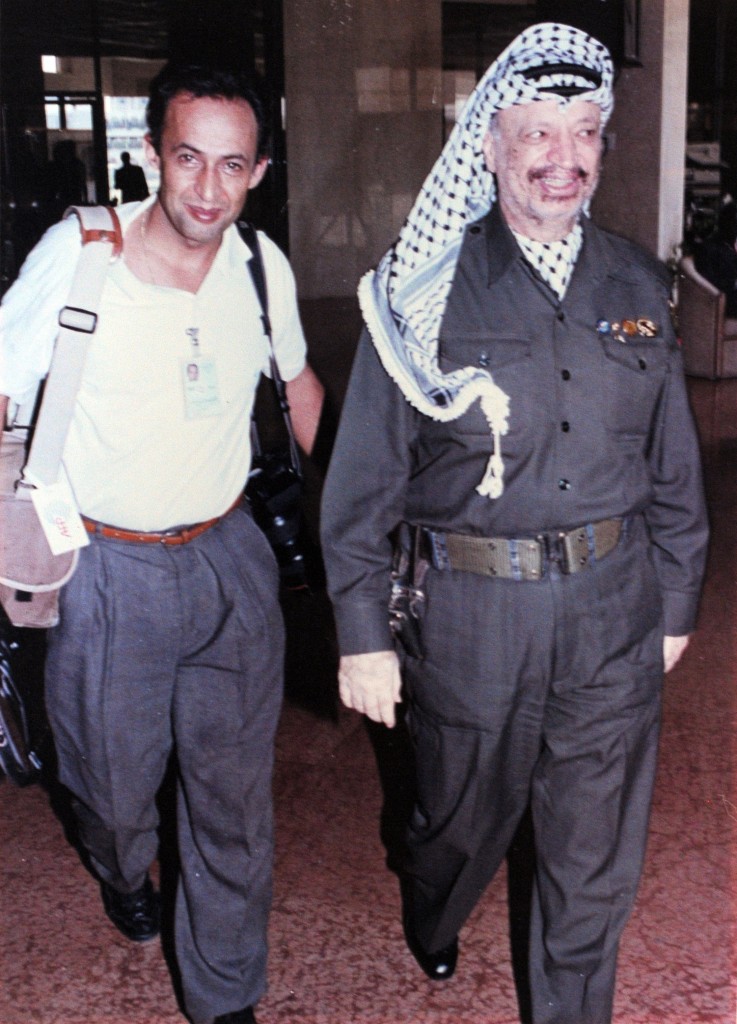
Brigade Rosse
In Nicaragua in 1988, Manoocher, as director of photography in Central America for AFP, through an Italian photographer, met a group of Italians who had been members of the Red Brigades, Italian far-left extremists, who had fled Italy to live in Nicaragua where they had become part of the Sandinista army. Manoocher started seeing them regularly during events organized for the press, where they always appeared armed and in Sandinista uniforms. Because of speaking Italian, Manoocher got invited to share their lunch of pasta. Years later, Manoocher returned to Nicaragua to shoot a documentary about street children in Managua. He met some of the now ex-paramilitaries again and found out that they all had become multimillionaires because of the confiscated land and wealth given to them by the corruptSandinista regime under Daniel Ortega. It was Manoocher’s first trip outside of France with his newly acquired French passport, given to him by French president Jacques Chirac. And it was also the night of the finals of the EuropeanFootball Championship. The now very settled Italian expats invited Manoocher to watch the match. Why not? A contact is a contact is a contact. They watched, drank, ate antipasti. At the very end of the game (as usual), France scored the decisive goal and Manoocher, freshly minted French citizen, jumped up and shouted “Goal”! He then looked around: a bunch of former Red Brigade terrorists staring at him in silence. Quickly he sat down again. “No pasta for you tonight,” they jested.

A 9/11 aftermath
Right after the terrorist attacks of 9/11, Manoocher took the first Air France plane to New York to photograph the aftermath. He stayed a few days in the city, but there wasn‘t much that he could do. People were searching for their missing relatives and friends. A Chinese company had started to remove the debris from the site of the twin towers. Following the leads of the anthrax attacks delivered by post that very same month, which seemed to come from Florida, he went to Miami. Manoocher stayed there for some time, working on a couple of stories. Meanwhile he got in touch with his old friend Bill Gentile (remember Panama?), who had become a professor for photojournalism at Kent State University. He invited Manoocher to come for a photo presentation and lecture. Manoocher agreed, leaving for the airport of Miami to take a flight to Ohio. Due to the situation there was a long, long security line, and several agents were checking and even interviewing the passengers. Right in front of him there were these two security officers chatting in Cuban Spanish. He gave them his French passport. One of the officers looked at it, reading his name and place of birth. Eyes wide open, he turned to his colleague and said in Spanish (without knowing that he would be understood): “We got him! We‘re gonna gain 10,000 dollars!“. Turning to Manoocher, he said: „One moment!“, while pushing a button. Suddenly there were tens of Miami police officers, in shorts, with dogs, who came to take Manoocher into custody. One of them opened his bag, finding his slides for the university presentation, from the Iranian Revolution, with photos of armed mullahs, people burning American flags etc. They held up the negatives to look at them. „Ah, you are a real terrorist!“
Manoocher asked: “Can I take a photo of you looking at the pictures?“
“Shut up and don‘t move!“. One of them called their superiors. Ten minutes later, two plain cloth officers appeared, looked at the pictures, typed Manoocher’s name into a device that seemed advanced at the time and looked at the result that buzzed out of the device as a paper slip. The other one looked at the negatives and remarked “Ah, I know this picture, it was a Newsweek cover a few years ago. Are you the photographer?“
“Yes, I am.“
“Oh, sorry, sir, we apologize, these men made a mistake, now we know who you are.“
Meanwhile Bill Gentile was waiting for Manoocher at the airport, getting worried and calling the police. Finally, with 6 hours delay, he made it to Ohio where Manoocher gave his lecture and got to meet Glenn Luther, a journalism student, who became his assistant in Afghanistan.
Nuristan
In August 2002, when he had already been in Kabul for a year, Manoocher decided that he needed to get out of the city, into the mountains, into the wilderness, preferably to Nuristan. The region was considered particularly wild, its inhabitants freedom-loving. Until 100 years ago, they had defied conversion to Islam, until wars and massacres forced them to do so. Until then, the region had been called Kafiristan, land of the infidels, by its neighbors; it was then given the name Nuristan, land of light. Under the Taliban, these impassable mountains, of all places, had become a retreat for al Qaeda, often to the chagrin of their inhabitants. Manoocher set out with five of his students. One of them, Kaveh, was from neighboring Panjshir Valley, which they used as a base of operations. They drove to the end of the mountain road, as far as one could still get in a vehicle. From there, they traveled with the two mountain guides and horses that Kaveh had organized. Early one morning in August, Manoocher’s birthday, they set out. The beginning was still easy to manage, but then the mountain paths became so narrow that one could only put one’s foot in front of the other, not next to it, and immediately next to it a 1000 m deep abyss gaped. Again and again dead donkeys and mules lined the paths, torn apart by land mines. They were in mined terrain! Up and down it went, the whole day, for days. Yet the spectacular views of the high mountains of the Hindu Kush, its equally deep valleys, rivers and waterfalls compensated them, as did the wildlife: mountain goats, mouflons, marmots and much more. On one icy night, on a high plateau still covered with snow in places even in August, they spent the night in the stone shelter of a shepherd who had invited them to his fire for a cup of warm sheep’s milk. At sunrise they set out again and took the direction that the shepherd had shown them to the next village.
It was a walk of a few hours, uphill, downhill, always following the horses, since there was no space beside them, until they reached the village. In its central square they saw young men posing, wrapped in embroidered cloaks, made up, with khol-blackened eyes and red-tinted lips. This, they explained to them, was the way young men in Nuristan traditionally go about courtship. The girls flock to the village square, look at the candidates, and pick the one they like best. The new rulers and the Islamists hiding in the mountains view this with great displeasure. And the travelers were soon to feel the same displeasure. In the following village, where they had been invited by the village headman, a friendly and cultured man, a group suddenly appeared who were immediately recognizable as extremists by their clothing, beard, lack of humor and lack of hospitality. In this case, they belonged to Al Qaeda. They questioned the travelers, eyed them sullenly, and disappeared again. The next morning, as the small group prepared to leave again, the village chief asked them, “Which way are you going?”
They told him. “But why?”
“Don’t go that way!” the man urged them. “The men of al Qaeda have ambushed themselves there to kill you all. Take another way!”
They struck out in the opposite direction and made to get away. Two days later they were back in the Panjshir Valley and in the car to Kabul, without many photos but with many memories.
